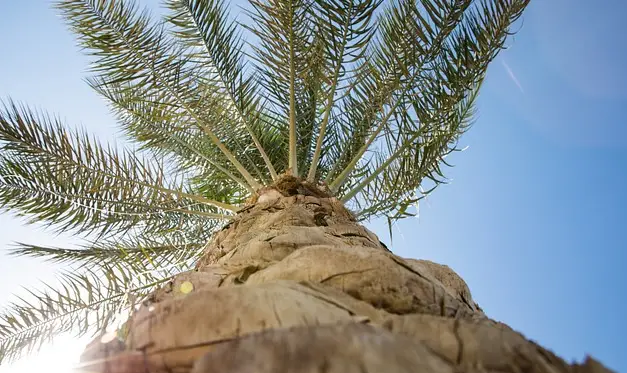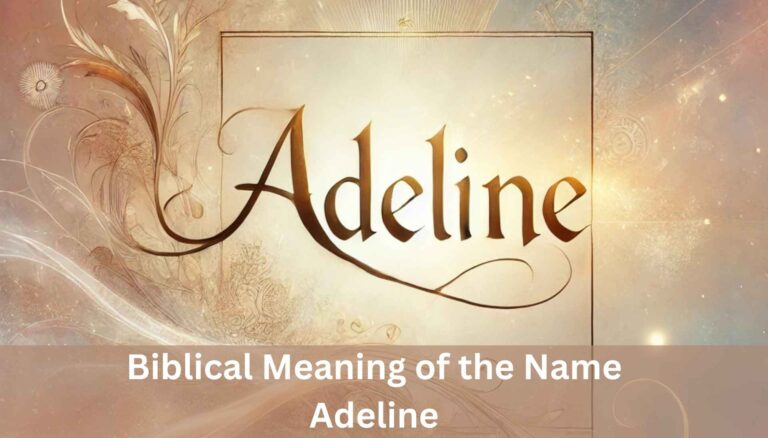Peace, victory, eternal life. Palm branches are mentioned in the Bible both literally and symbolically. The Biblical Meaning of Palm Trees is mentioned in countless other Old and New Testament tales, usually associated with jubilation, refuge, and the just.
In ancient Israel, people waved palm branches during festivals like Sukkot and used them to welcome leaders or mark sacred places. Further into the New Testament, people laid palm branches before Jesus as he rode into Jerusalem, an act of reverence and anticipation of a new hope.
Palms are abundant in the Middle East, their use in everyday life adding to their importance as a symbol in scripture. The link between palms and faith is strong, with roots in both Jewish and Christian traditions. Each of the following sections illustrates how these symbols continue to inform beliefs and rituals today.
What is biblical palm symbolism?

As we can see, palm symbolism in the Bible is rich and far-reaching, penetrating all aspects of faith, hope, and everyday life. In ancient Mesopotamia, palms symbolized victory and triumph, celebrating times of great victory. The Bible continues this in a number of ways.
On sacred spaces, palm trees are connected with sacred spaces, including the walls of Solomon’s Temple carved palms, cherubim, and flowers. These representations set up a precedent for palms to be associated with spirituality and physical attractiveness.
Palms had an important part in Jewish tradition as well. During the Feast of Tabernacles, people used palm branches to rejoice before the Lord, as told in Leviticus 23:40. This act essentially made the palm a symbol of praise and celebration, highlighting its spiritual significance.
The biblical expression “flourish like a palm tree” comes from the book of Psalms. It is a symbol of being rooted and built up in faith, despite the storms. Palms can remain erect in the face of storms and drought, even while growing in deserts, beautifully illustrating how faith can thrive in adverse conditions.
Palm trees provided so much for people in ancient times. Everything about the tree might be used to fulfill daily needs, from food to building materials for houses. This transformed palms from mere symbols to tangible assistance in daily life.
This importance, and their prevalence, can be seen by the fact that Jericho—known as the “City of Palms”—was so fruitful with these trees.
Perhaps the most famous of these is Jesus’ triumphant entry into Jerusalem, with the crowd waving palms and laying them before Jesus. This new association—still remembered today as Palm Sunday—linked palms with notions of triumph, peace, and hope for the future.
Palm imagery throughout scripture
Palm imagery, therefore, saturates the pages of scripture, infusing its text with a tangential meaning that reaches far beyond mere visual description. Palms adorn narratives and poetry, liturgy, and temples. They beautifully connect disparate themes of victory and righteousness, flourishing life and sacred celebration.
Their presence in scripture reveals not only the beauty and diversity of the natural landscape of ancient Israel, but profound spiritual truths. In the Bible, the palm tree—primarily the date palm—functions as a literal signpost for the area’s ecology. It is a window into what the culture values.
Palms were important in temple architecture, in processions and festivals, and in symbolic action. Their symbolic power continues to define Jewish and Christian traditions to this day.
1. victory and triumph embodied
Palm branches are a sign of victory and triumph embodied through public celebration and processional in scripture. Most famous of all is the story of Jesus’ triumphal entry into Jerusalem. As described in the Gospels, crowds laid down palm branches and shouted praises, welcoming Jesus as their king (John 12:13).
While today we can often see this event as the celebratory beginning to Holy Week, this scene established the framing of that last week of Jesus’ life. The use of palms was a deliberate, calculated decision. In Jewish culture of the time, waving palm branches was a sign of celebrating military victories.
They were demonstrating their hope that deliverance was coming in this way too. So, for instance, after the Maccabean revolt, Jews used palms to celebrate their restored liberty. In these instances, palms serve as a reminder of God’s fidelity and the rejoicing embodied in triumph after struggle.
They serve to bridge the community’s exuberance with the understanding that victory and triumph are embodied in divine action.
2. righteousness and upright living
As I wrote in an earlier post, scriptural palm imagery closely associates palm trees with righteousness and moral wholeness. The straight, tall trunk of the date palm is a perfect metaphor for living an upright life. Psalm 92:12 states, “The righteous will flourish like a palm tree.
This psalm verse beautifully connects the tree’s posture and the thriving life of the one who walks in God’s ways. The palm’s growth—consistent and unbending—reflects the expectation for people to lead righteous lives. The palm’s shape becomes a pedagogical tool.
It challenges neighborhoods to be true to their principles and to behave with integrity. Temples built by King Solomon featured palm carvings as part of their ornamentation (1 Kings 7:36-37), reinforcing the connection between uprightness and worship.
3. flourishing and abundant life
They grow prodigiously in a land otherwise known for its lack of water, a powerful testament to the power of resilience. The date palm, native to Palestine, produces a sweet, healthy fruit, shade from the hot sun, and wood and rope for everyday use.
Its capacity to bear fruit and flowers equivalently for a century paints a portrait of perpetual bounty. In fact, throughout scripture, palms are a symbol of God’s gift of a fruitful, abundant life.
References in Deuteronomy and Leviticus describe palms as part of harvest festivals, where people give thanks for provision and goodness. Palm branches’ presence in such celebrations emphasizes not only a thankfulness for abundance but a desire to remain blessed with such bounty.
Their capacity to prosper in extreme conditions is a testament to the power of faith to cultivate life in the face of adversity.
4. worship and sacred celebration
In this way, palm branches serve to elevate the mood even further, associating worship, celebration, and triumph throughout biblical tradition. In Leviticus 23:40, God instructs the Israelites to take palm branches and rejoice during the Feast of Tabernacles.
This festival united the community in exultant adoration, celebrating the bounty of the harvest and God’s ongoing providence. Palms in worship bring us into a physical, embodied experience of shared community and joy.
Yet even more than being instruments of God’s beauty, these trees help us to remember God’s presence through times carved out for reflection and praise. Palms served an important artistic function within the temple structure, as seen in the decoration of Solomon’s Temple.
By doing so, they change common symbols into dimensions of sacred space that connect the profane life to the sacred experience.
5. representing eternal life hope
The eschatological symbolism of palms extends the concept of eternal life and resurrection in general, which is particularly evident in Christian eschatology. The link between palms and hope for the future can be traced both linguistically and culturally.
The Greek word for palm, “phoinix,” signifies a storehouse. It is even the root for “phoenix”—the legendary bird that rose from its own ashes. In the ancient Near East, this myth frequently associated with the palm tree.
It connected the tree’s everlasting life to the promise of renewal and resurrection. Revelation 7:9 describes a vision of a multitude holding palm branches before God’s throne, symbolizing victory over death and the promise of new life.
This makes clear that the palm is a symbol of current prosperity. It too becomes a sign of enduring hope.
6. resilience in harsh conditions
The date palm is well-adapted to extreme environments. It thrives in baking, loose sand and drought conditions, it endures immense heat, and remains upright after hurricanes. It takes six to eight years to start yielding, but once established it can continue to produce for decades.
This ability to persevere through adversity grows to serve as a powerful emblem for Christians experiencing their own earthly tests. The palm’s narrative is a tale of resilience—flourishing and fruitful in the face of struggle.
In the Bible, this story becomes reinterpreted as a story about faithfulness. Just as the palm survives the harshest storms, so too can humans remain steadfast in their faith and worship. They have faith that their perseverance will bear eternal fruit.
7. divine presence connection point
Palms, particularly palm branches, serve as a touchstone for divine presence. Many traditions believe that palms were present in the Garden of Eden, symbolizing God’s presence. In worship, the incorporation of palm fronds and palm-draped spaces beautifully inspires a feeling of closeness to the divine, especially during palm sunday services.
Additionally, palm branches adorned the walls and door frames of the Temple in Jerusalem, transforming this recognizable tree into an evocative sign of God’s constant presence. Worshippers utilized palms to infuse energy and vibrancy into sacred spaces, enhancing the spiritual significance of their worship.
This beautiful act illustrates the connection between the created world and spiritual truths, linking faith to the reality of everyday life and enriching the palm sunday celebration.
8. symbolizing spiritual growth path
The outward growth pattern of palm trees reflects the inward process of spiritual development. Palms literally reach for the sky, growing and piercing upward through layers of sediment and stone before emerging into the sun.
This growth is not fast, but it is sure, characterized by patience and enduring faithfulness. Faith similarly deepens as a result of daily habits and continual willingness.
The Bible’s use of palm imagery to describe spiritual growth gives believers a simple but powerful picture: growth takes time, but the outcome is strength and fruitfulness. Each ring in a palm’s trunk is a reminder of another year of survival.
As with any stage of faith, it is an opportunity for a deeper understanding.
9. contrasting palms with other symbols
Scripture uses plants and trees–or the absence of them–to express grief, hope, judgment, and so much more. Fig trees, olive trees, and cedars have rich symbolism as well.
To be sure, unlike the fig—which when without fruit often indicates judgment or barrenness—the palm represents life, abundance. Olives imply peace and anointing, and the cedar tree hints at the ideas of majesty and strength.
Palms by themselves cover the bases of victory, joy, and endurance—making them unique. Temple art and festivals beautifully illustrate their special duality as a natural and spiritual symbol.
This interweaving of day-to-day life and practice of faith is an incredible window into what life must’ve been like in biblical culture.
Palms in ancient near east culture
Palm trees occupied a prominent and unchanging role in the everyday life of the ancient Near East. They were non-domesticated, growing wild all across the region, so the average person saw them every day. As a result, the city of Jericho became known as “the City of Palms.” This nickname gives us an indication of how widespread and important these trees were in the context of ancient Mesopotamia.
Palms were more than shade or food; palms were everything. They represented triumph and eternal existence. In the ancient world, their tall, upright shape evoked wonder and reverence. Additionally, with some living over a hundred years, they naturally became enduring powerful symbols of strength, resilience, and hope.
In ancient times, numerous cultures considered the palm a representation of victory and accomplishment. Soldiers returning from war would occasionally bring palm branches home with them as evidence of their victory. This sign was significant not just for the Christian community but also for the broader cultural context, including Roman culture.
We can forget how important the palm branch was in Jewish life. For instance, during the Feast of Booths, worshipers waved the “Lulav,” a tightly bound palm leaf, as they prayed. The Temple of Solomon featured palmettes carved into its walls. This detail serves as an illuminating glimpse into how much the palm branch symbol was ingrained in their belief system.
Stories and myths connecting palms to broader concepts, like victory or fertility, persisted. The myth of the Phoenix restored to life from its ashes intersects with folklore about palm trees, marking celebration and the arrival of new life after a long, difficult winter.
Egyptian deities like Hathor and Nut were referred to as the “Lady of the Date Palm.” On these stones, they were usually shown sprouting from the tree’s boughs. These connections between trees, deities, and legends changed the palm into something far beyond mere flora, intertwining it with spiritual significance.
Rather, it quickly became a potent symbol of triumph, hope, and resilience for people throughout the region, including early Christians and the Jewish people alike.
The palm tree’s physical lessons

Palm trees have truly been a wonder in the biblical world, especially for their shape, strength, and lengthy life. These trees do much more than beautify otherworldly landscapes. Their qualities have rich significance for public life, spirituality, and virtue.
The manner in which palm trees grow—high-reaching, unbending and unwavering—reflect admirable characteristics found in biblical teachings. From their deep roots to their regal crown, palms are an example of strength and patience. They represent a deep and spiritual relationship between the soil and the sky.
Standing tall: integrity symbol
Lessons in physical integrity It’s difficult to overlook a palm tree’s tall, proud, vertical orientation. In the Middle East, palms are ubiquitous. A regal, tall palm tree frequently becomes a symbol of life and hope.
This tall, smooth trunk can tell the story of a life lived with integrity and dignity. In the scriptures, what it means to “stand” or “stand firm” in faith is a repeated exhortation. The palm’s remarkable posture lends itself to this idea.
Just as a palm does not bend out of shape in a storm, the call for integrity is about sticking to what is right, even when the wind picks up.
Bearing fruit: productivity metaphor
Palms are more than just tall. For one, it takes decades for them to grow to a point where they can bear dates or coconuts. After they grow up, they produce so much!
This example of slow but steady growth is a powerful testament to the virtues of patience and steady, determined work. In biblical language, the “fruit” you bear can refer to your good works or a life lived in accordance with your beliefs.
Like the palm, it takes time to see results. After a while, a life planted in rich soil produces much fruit.
Enduring nature: faithfulness picture
Most palm trees have lifespans that exceed a century. Their roots, snaking downward and outward, resist droughts and tempests. This kind of resilience, perhaps more than any other, is a lesson in faithfulness.
The Bible frequently refers to God’s promises as unchanging through the ages, and the palm’s longevity fits that motif perfectly. Though seasons may change around it, the palm remains, providing refuge from the sun, and still acting as a symbol of perseverance.
Palms and messianic prophecy
In the biblical context, palm branches have rich significance rooted in messianic prophecy, representing victory and peace to ancient Israelites and the hope of future redemption. Their use in Christian symbolism during rituals or public celebrations reinforces this connection, as these concepts are interwoven throughout Scripture, converging most clearly in the association of palms with the Messiah.
The triumphal entry significance
The account of Jesus’ entry into Jerusalem, popularly called the Triumphal Entry, is unique among all four gospel accounts. The crowd laid palm branches on the road and shouted “Hosanna,” an expression which comes from Psalm 118 that means save, which is a cry to God. This act demonstrated their faith in Jesus as the promised Messiah.
By riding a donkey, Jesus fulfilled Zechariah 9:9, a prophecy made almost 500 years earlier that described the Messiah as humble and peaceful. The crowd’s actions echoed earlier events, like the Maccabean revolt—when people waved palms to celebrate victory over foreign rulers, as recorded in 2 Maccabees. Palms had been used as well during Hanukkah, celebrating the victory and independence of the Jews.
In Jesus’ day, palms signified triumph and hope for liberation.
Eschatological hope represented
Palms have meaning beyond specific events. In Christian imagination, palms have increasingly been associated with eschatological hope, the hope for a new creation where all wrongs are righted. Iconography in the Book of Revelation presents a vision filled with palm branches.
As they glorify God, this deep-rooted symbol forms a link to the advent hope of redemption and eschatological peace. Palms continue to reach ahead. They look forward to a day when all of creation will be set to right and the messianic prophecies fulfilled in their entirety.
Palms within sacred architecture

Palm imagery appears again and again throughout sacred architecture, and biblical history. In addition to their symbolic meanings, these trees were common in the landscapes surrounding ancient Israel. Their soaring, smooth trunks and sweeping, lush fronds dazzled the senses, brilliant green against the azure sky.
In Hebrew tradition and biblical symbolism, palm trees represent peace, longevity, and victory. This significance is not limited to narratives. It is the key to the building and ornamentation of temples and tabernacles.
Temple decorations and meaning
The Temple of Solomon serves as probably the best known, though. Artisans sculpted palm trees into the walls of the temples, frequently interspersing them with cleverly hinged cherubim. These carvings weren’t merely decorative.
Palms represented triumph and renewal—an appropriate sentiment in any house of worship. Many of these surfaces were covered in gold, causing the palms to shine and almost come to life with glittering beauty. Palm trees were engraved on the temple walls in the Holy Place and the Holiest of Holies.
They both enhanced the atmosphere of wonder and beauty. Added to the greenery and plants provided by nature, these decorations further turned the temple into a paradise, peaceful garden. It provided guests with a glorious wink to the Garden of Eden.
Tabernacle imagery insights
The palm motifs were found in the tabernacle, a moveable tent used before the temple was built. Palms were woven into curtains and used in ritual purification ceremonies. In addition, during Sukkot the people waved palm branches, which associated the sacred space with communal worship and praise.
With palm carvings on the doors, Ezekiel’s vision of the heavenly temple illustrated their eternal significance to the divine architecture. In these sacred spaces, the palms waved as they had on the first Palm Sunday—ancient reminders of God’s presence, blessing, and a prayer for victory.
Interpreting palm symbolism today

Palm symbolism continues to be an important part of worship spaces and faiths today. Now, palm branches sometimes represent victory and peace, and sometimes eternal life—just as they did in the biblical world. These messages are echoed through Christian traditions, particularly during the observance of Palm Sunday.
On this day, churches around the globe distribute palm branches to celebrate Jesus’ triumphal entry into Jerusalem. Yet this act continues to evoke joy. It opens the door to an ancient tale as rich with symbolism and depth.
Translation variations impact
The significance of palm symbolism can change dramatically based on how the bible is translated. In one of these versions, palms are referred to as a symbol of peace or victory. While some focus on their destructive power, others celebrate their beauty and growth.
These minor adjustments can help dictate the way someone interprets the piece. Translations that emphasize winning sometimes result in church services focused on conquering adversity. The ones that emphasize development tend to stress spiritual adulthood. This is important for churches, as each church might rely on one translation over another, informing their own teachings.
Commentary perspectives explored
Scholars interpret palm symbolism from various perspectives. Some point to the palm’s slow growth—taking up to 30 years to fruit—as a sign of patience and spiritual growth. Some want to emphasize its strength and hardiness to grow in difficult spaces, and so they appeal to the idea of resilience.
Most of these commentaries trace the lineage of palms all the way back to the Garden of Eden, associating them with peace and the presence of God. By contrasting these perspectives, readers will find greater richness in the biblical text.
Modern theological views
Modern theological interpretations occasionally adhere to traditional symbolism—victory, peace, kingship—but often introduce fresh concepts. Other churches even alternate using palms with these willow branches, depending on what is more readily available in the area.
Some interpret the palm as reflecting the ideal of the entire community, flourishing and stretching its branches to the heavens. These changes are a reminder that even the most ancient of symbols can continue to resonate in surprising ways.
Palm trees in American landscapes

Palm trees have had a lasting impression on American landscapes, particularly in southern and west coast states. In truth, in cities like Los Angeles, palms occupy nearly every street and yard, drastically influencing how these cities are perceived and experienced.
The California Fan Palm is the only native species to Southern California. Cities have covered their parks and streets with non-native species such as the Mexican Fan Palm and Canary Island Date Palm. That started to change in the late 1800s. It really got going in the 1930s, when thousands of palms were planted as community improvement projects.
Ecological role in US regions
Palms have an important ecological role in local habitats. They provide nesting habitat and forage plants for birds, as well as pollinators and other beneficial insects. In the hot, dry parts of the country, palms help shade the ground, lowering the temperature and slowing water loss.
Besides anchoring beaches and dunes, their deep roots help stave off erosion by preventing soil from washing away during heavy rains. Even though the majority of palms in the U.S. Aren’t native, they still add a great splash of plant diversity. They add greater diversity to urban parks and green spaces.
Local community palm connections
Aside from their appearance, palms have taken on a deeper meaning to many American communities. In Los Angeles, they appear on postcards and the city’s municipal logo. In Hawaii, as in many tropical cultures, palms represent hospitality and conviviality.
Many neighborhoods hold events or plantings that feature palms, showing their role in local pride and shared memories.
Palm Sunday traditions stateside
For Christians of many denominations across the U.S., Palm Sunday is an opportunity to observe the beginning of Holy Week. Churches distribute palm fronds, linking to ancient biblical narratives.
This custom provides Americans both a tangible connection to their faith’s history and a sense of community that unites them each spring.
Conclusion of The Biblical Meaning of Palm Trees
In fact, you can even see it in those trees — palms — that line the streets of so many American cities. Palms symbolize life, hope, and a peaceful spirit—simple but profound concepts that continue to resonate. People in the Bible not only utilized palms in worship, but brought them into their homes.
Now, over two thousand years later, we still view palms as a symbol of peace and prosperity! Take a stroll down almost any street in Los Angeles or Miami, and palm trees punctuate the landscape, as tall and erect as they were in their heyday. These trees provide a deeply human connection between the ancient world and ours. Interested in knowing more or discussing your own interpretation of palm symbolism? Let us know in the comments below or send us your story!
Frequently Asked Questions
What does the palm tree symbolize in the Bible?
The palm branch in the Bible, used throughout scripture, usually symbolizes victory, peace, and eternal life, representing righteousness and blessing, as seen in biblical references of worship and triumph.
Why were palms used during Jesus’ entry into Jerusalem?
Palms, particularly the palm branch symbol, were used to honor and welcome Jesus, indicating His recognition as the Messiah, representing hope, victory, and fulfillment of prophecy.
How did ancient Near Eastern cultures view palm trees?
In ancient Near Eastern cultures, palm trees were viewed as a symbol of wealth and plenty, often depicted in art and religion, reflecting their spiritual significance.
What spiritual lessons can we learn from the palm tree?
The palm tree’s ability to bend and not break in the storm serves as a powerful lesson in resilience and faith, much like the palm branch symbol in Christian symbolism, urging us to stand up for what is true and right.
How are palm motifs used in sacred architecture?
Palm motifs, particularly the palm branch symbol, are among the most common decorative elements in sacred architecture, especially in ecclesiastical carvings and mosaics, serving as reminders of paradise and God’s presence.
Are palm trees common in American religious landscapes?
Are palm trees, particularly the palm branch symbol, prevalent in American religious landscapes, especially Christian ones? They offer rich biblical symbolism and beauty to American landscapes.
Can the symbolism of palms be applied in modern faith?
Of course, it is! Palms continue to symbolize peace, victory, and spiritual growth even in our modern world. So, believers can take them and incorporate them into worship, celebratory movement, personal reflection as a way to connect with these biblical truths.







